
Student-friendly carbon footprint calculator.
- Subject:
- Anthropology
- Career and Technical Education
- Environmental Studies
- Social Science
- Material Type:
- Activity/Lab
- Provider:
- UNESCO
- Provider Set:
- Office for Climate Education
- Date Added:
- 01/09/2020

Student-friendly carbon footprint calculator.
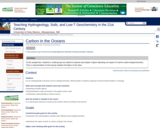
In this assignment, students in small groups are asked to interpret and explain a figure depicting one aspect of marine carbon biogeochemistry. Then a representative of each group explains the figure to the class.
(Note: this resource was added to OER Commons as part of a batch upload of over 2,200 records. If you notice an issue with the quality of the metadata, please let us know by using the 'report' button and we will flag it for consideration.)
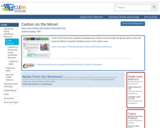
In this 3-part lab activity, students investigate how carbon moves through the global carbon cycle and study the effects of specific feedback loops on the carbon cycle.
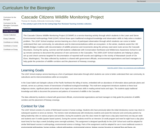
This multi-term assignment introduces students to local indigenous stories, significant plants and animals of our region and some basic skills in reading animal tracks and signs.
(Note: this resource was added to OER Commons as part of a batch upload of over 2,200 records. If you notice an issue with the quality of the metadata, please let us know by using the 'report' button and we will flag it for consideration.)
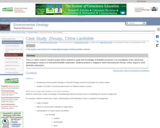
This is a 'citizen science' research project where students to apply their knowledge of landslide processes in an investigation of the natural and anthropogenic causes of a real-world landslide catastrophe. Students produce a 'magazine' article discussing the Zhouqu, China, August 8, 2010 landslide catastrophe.
(Note: this resource was added to OER Commons as part of a batch upload of over 2,200 records. If you notice an issue with the quality of the metadata, please let us know by using the 'report' button and we will flag it for consideration.)
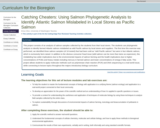
Students use phylogenetic analysis to identify farmed Atlantic salmon mislabeled as wild Pacific salmon by local stores and suppliers.
This project allows students to apply molecular methods such as polymerase chain reaction (PCR) and DNA sequencing to a real-
world issue.
(Note: this resource was added to OER Commons as part of a batch upload of over 2,200 records. If you notice an issue with the quality of the metadata, please let us know by using the 'report' button and we will flag it for consideration.)
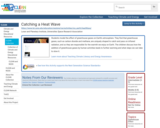
Students model the effect of greenhouse gases on Earth's atmosphere. They find that greenhouse gases, such as carbon dioxide and methane, are uniquely shaped to catch and pass on infrared radiation, and so they are responsible for the warmth we enjoy on Earth. The children discuss how the addition of greenhouse gases by human activities leads to further warming and what steps we can take to slow it.
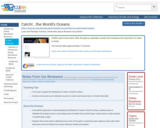
Children get to know each other through an icebreaker activity that introduces the importance of water on Earth.
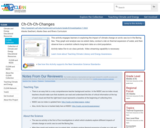
This activity engages learners in exploring the impact of climate change on arctic sea ice in the Bering Sea. They graph and analyze sea ice extent data, conduct a lab on thermal expansion of water, and then observe how a scientist collects long-term data on a bird population.
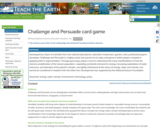
Developed by a team of scientists from two national laboratories, education researchers, gamers, and a professional game developer, Challenge and Persuade is a highly social, fast-paced, fun-to-play card game in which players compete in applying skills in argumentation. Through game play, players come to understand the many manifestations of how the extreme amplification of the human population, exploding worldwide demand for energy, increasing exploitation of water resources, and alteration of the planet's climateâare tightly intertwined at the nexus of energy, water, and climate; one cannot be considered in isolation from the other two. Development was supported by the National Science Foundation.
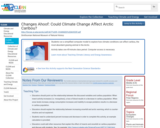
Students run a simplified computer model to explore how climate conditions can affect caribou, the most abundant grazing animal in the Arctic.
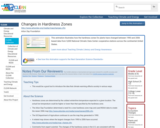
This animation illustrates how the hardiness zones for plants have changed between 1990 and 2006 based data from 5,000 National Climatic Data Center cooperative stations across the continental United States.
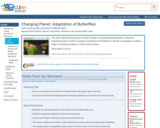
This video addresses the impact of climate change on several butterfly populations. Warming temperatures lead to shifts in location of populations of butterflies or die-offs of populations unable to adapt to changing conditions or shift to new locations.
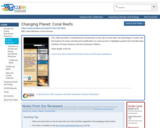
This video provides a comprehensive introduction to the role of coral reefs, the physiology of corals, and the impacts of ocean warming and acidification on coral survival. It highlights experts from the Bermuda Institute of Ocean Sciences and the University of Miami.
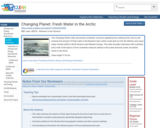
This Changing Planet video documents scientists' concerns regarding how melting Arctic sea ice will increase the amount of fresh water in the Beaufort Gyre, which could spill out into the Atlantic and cause major climate shifts in North America and Western Europe. The video includes interviews with scientists and a look at the basics of how scientists measure salinity in the ocean and how ocean circulation works in the Arctic.
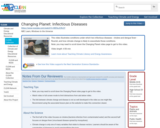
This video illustrates conditions under which two infectious diseases - cholera and dengue fever - flourish, and how climate change is likely to exacerbate those conditions. Note: you may need to scroll down the Changing Planet video page to get to this video.
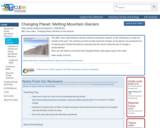
This NBC Learn video features climate scientists doing their research on Mt. Kilimanjaro to study the climate of the past. The scientists put the recently observed changes on the glacier into perspective by comparing past climate fluctuations, stressing that the current observed rate of change is unprecedented. Note: you will need to scroll down the Changing Planet video page to get to this video.
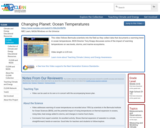
This video follows Bermuda scientists into the field as they collect data that documents a warming trend in ocean temperatures. BIOS Director Tony Knapp discusses some of the impact of warming temperatures on sea levels, storms, and marine ecosystems.
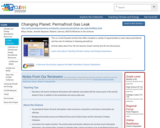
This is a multi-faceted activity that offers students a variety of opportunities to learn about permafrost and the role of methane in thawing permafrost.
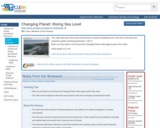
This video discusses the social and economic impacts (worldwide and in the US) of sea level rise caused by global warming (aired April 1, 2011). Note: you may need to scroll down the Changing Planet video page to get to this video.